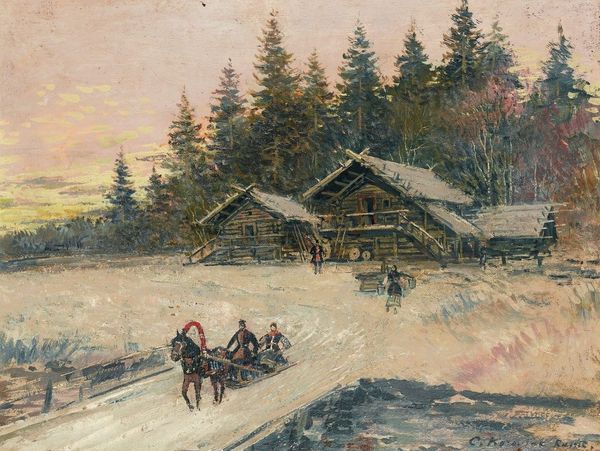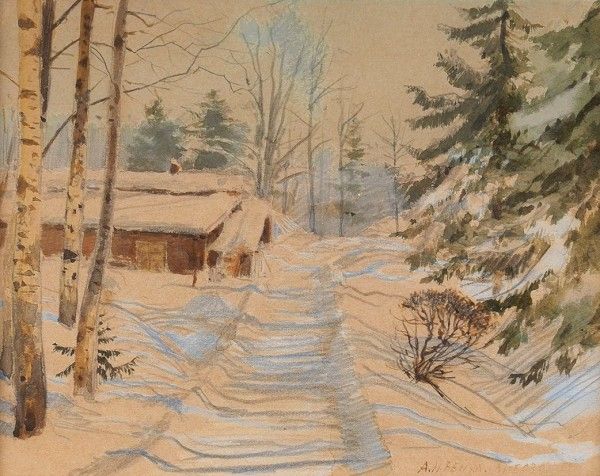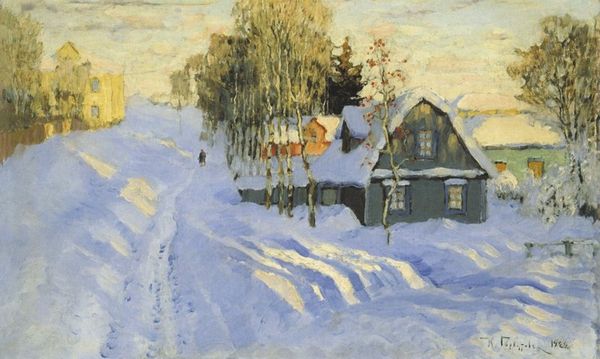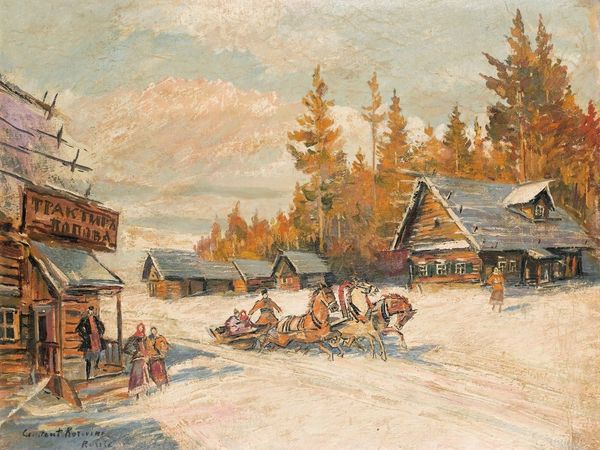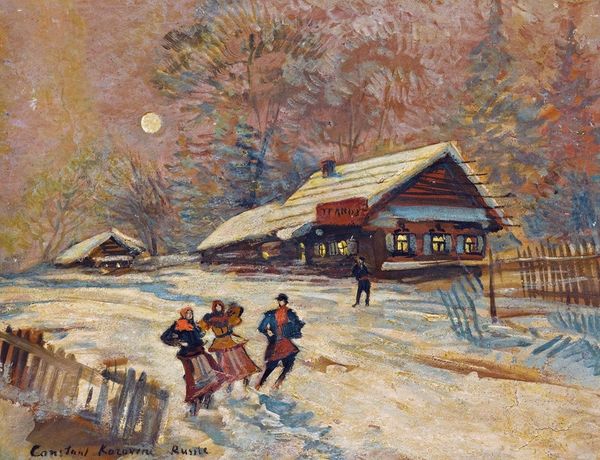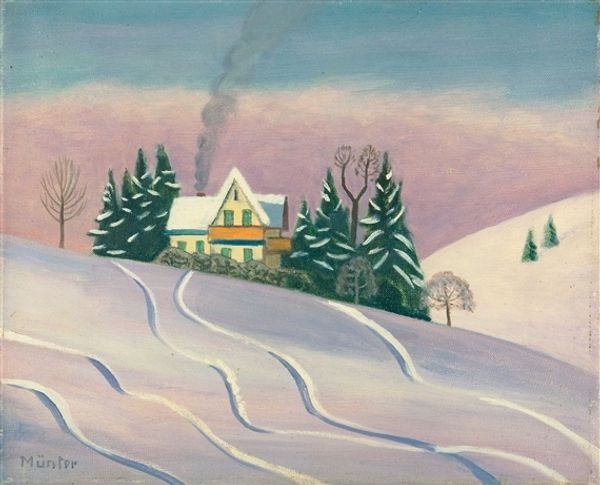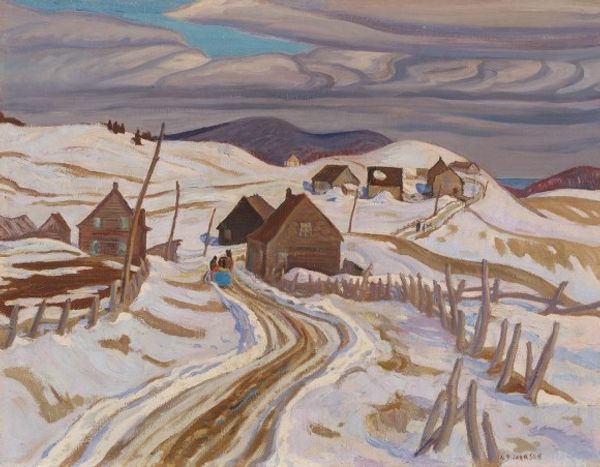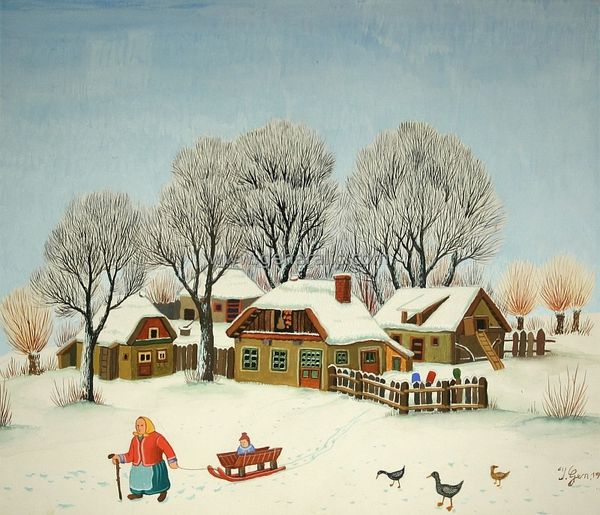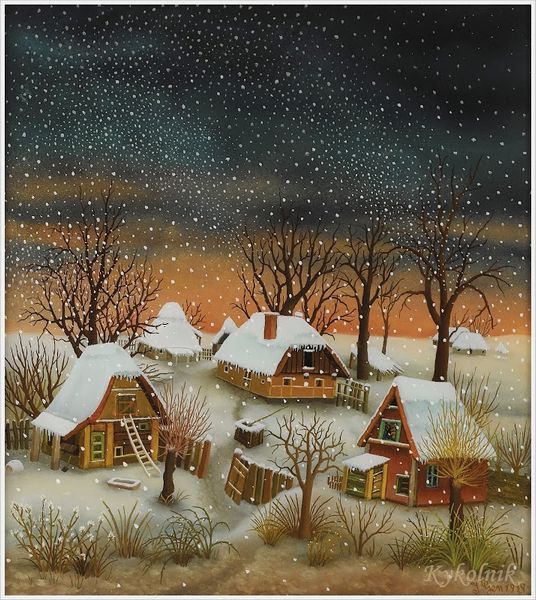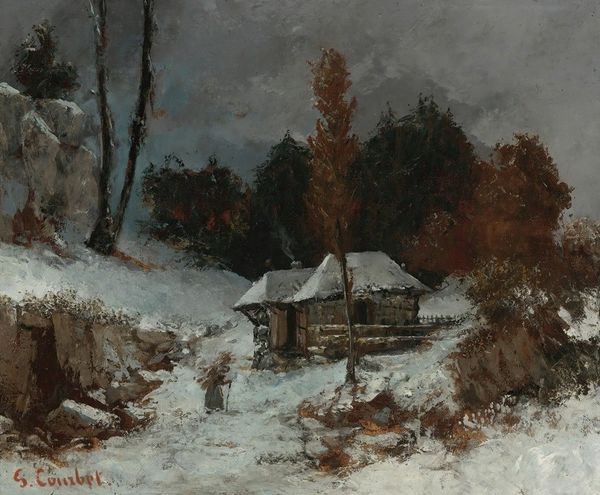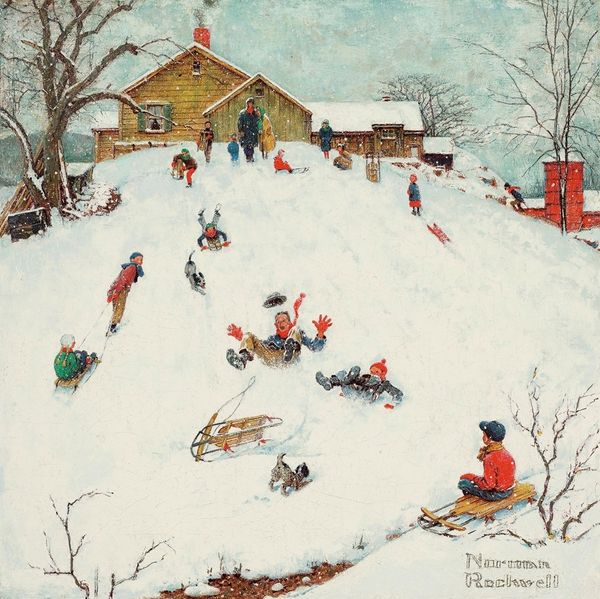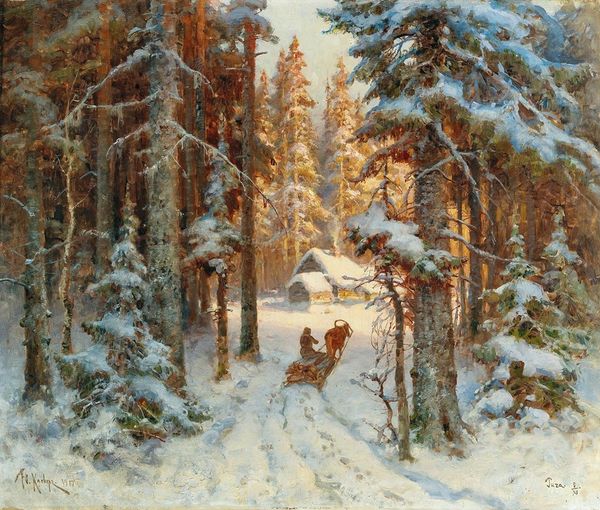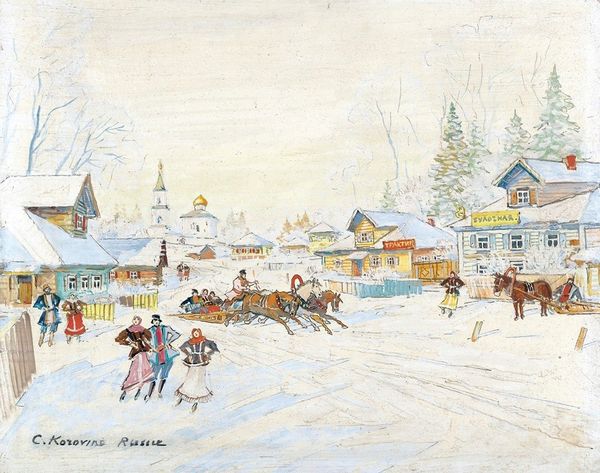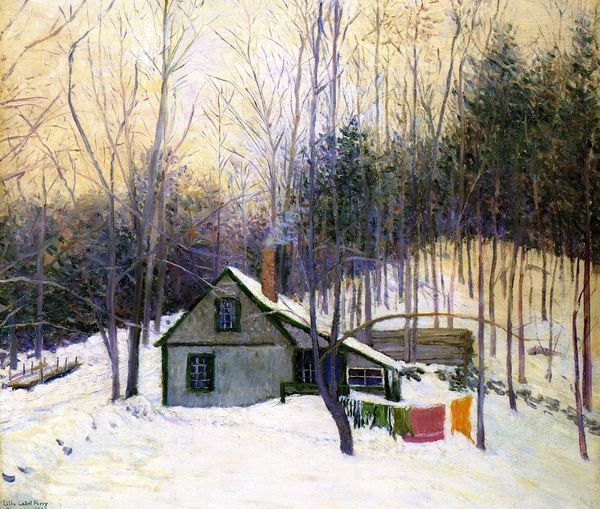
painting, oil-paint, watercolor
#
painting
#
impressionism
#
oil-paint
#
landscape
#
impressionist landscape
#
figuration
#
oil painting
#
watercolor
#
romanticism
#
russian-avant-garde
#
watercolour illustration
#
genre-painting
#
watercolor
#
realism
Copyright: Public Domain: Artvee
Curator: What strikes me immediately about Korovin's "Russian Village Under Snow" is its masterful use of light and color. There's an almost ethereal quality to the snow-covered landscape, achieved through subtle variations in tone. Editor: Yes, the light is undeniably beautiful, but what speaks to me is the quiet isolation conveyed. This image, especially the figure standing near the lonely cabin, highlights the often harsh realities of rural life and limited social mobility under Tsarist Russia. It also speaks of endurance amid environmental challenges. Curator: True, but let’s also acknowledge the sophisticated construction of the piece. Observe how Korovin’s brushstrokes capture the texture of the snow, transitioning from dense patches to a thinner veil on the trees, achieved through deft handling of watercolor. The perspective is also interesting, guiding the eye from the foreground figures back to the distant, setting sun. Editor: Beyond the aesthetic merit of his impressionistic rendering, consider the context. How does Korovin’s image reflect or challenge romanticized depictions of rural Russia, often produced for urban elites? Was he engaging with the social stratification evident even in remote settlements, like this isolated one he's chosen to represent? Curator: It's undeniably picturesque, but let’s consider also the balance in composition. The diagonal sweep of the snow-covered road divides the picture plane dynamically, juxtaposing the rustic cabin on the right with the bare trees to the left, achieving visual equilibrium. The sled pulls you into the composition so deliberately, too. Editor: Perhaps we can interpret that pulling feeling not only aesthetically but also consider themes of obligation and hard labor? This person on the sled seems so burdened. Whose interests were being served by these idealized depictions? It begs us to think about representation. Curator: That is possible, I agree. It prompts thought. All in all, it offers us a lens into the landscape traditions through the prism of artistic composition and color interaction. Editor: Yes, and for me, that view is complicated. These depictions, although skillful, need to be read alongside an acknowledgement of the harsh realities faced by so many. Ultimately it serves as an important document ripe for social history and interpretation.
Comments
No comments
Be the first to comment and join the conversation on the ultimate creative platform.
